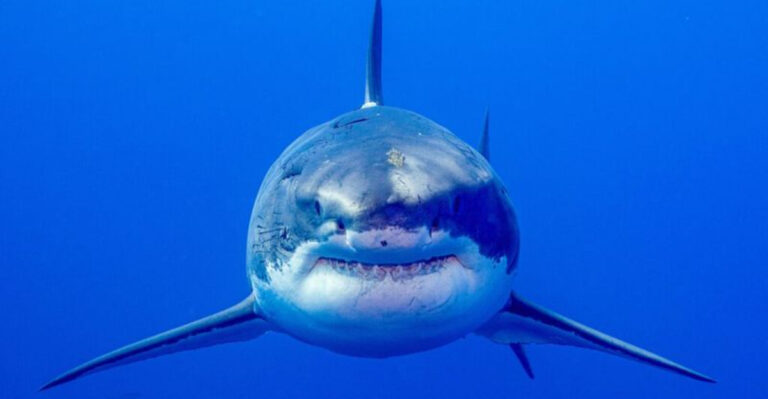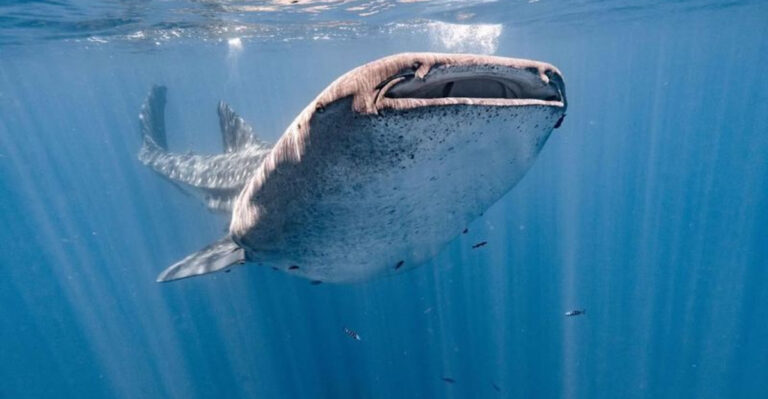15 Crucial Differences Between Cats And Dogs You Didn’t Know About
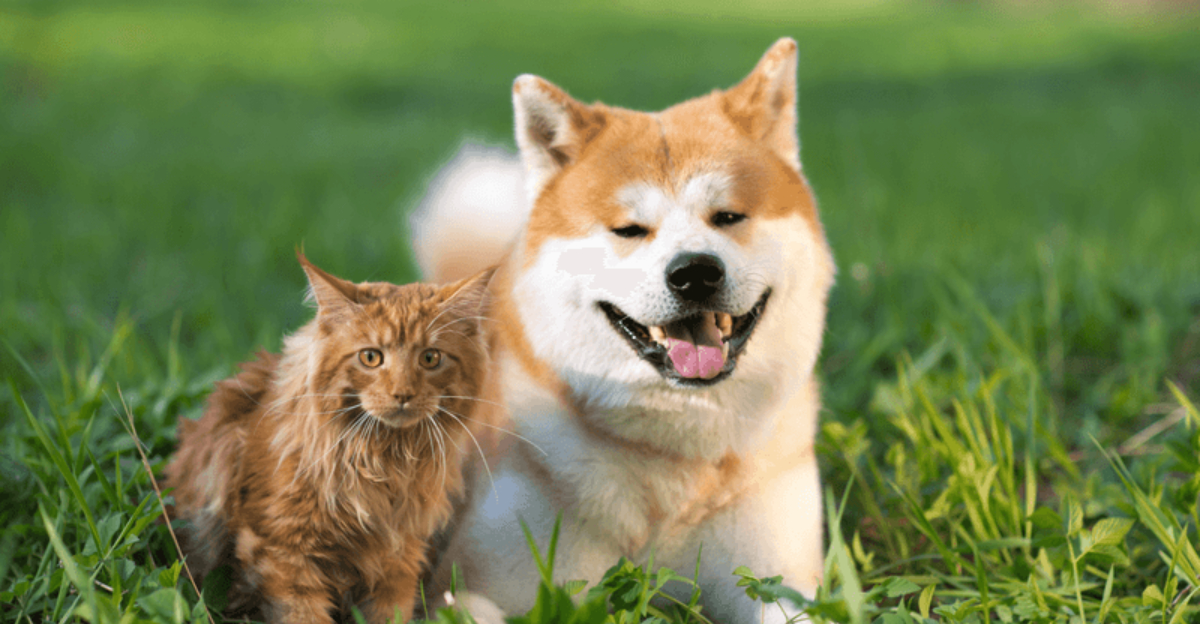
Cats and dogs have been our loyal companions for thousands of years, yet these furry friends couldn’t be more different from each other.
While we love them both, understanding what makes each species unique can help us become better pet parents.
From surprising behavioral traits to biological quirks, these differences explain why your cat isn’t just a small dog – and why your dog isn’t just a barking cat!
1. Night Vision Champions
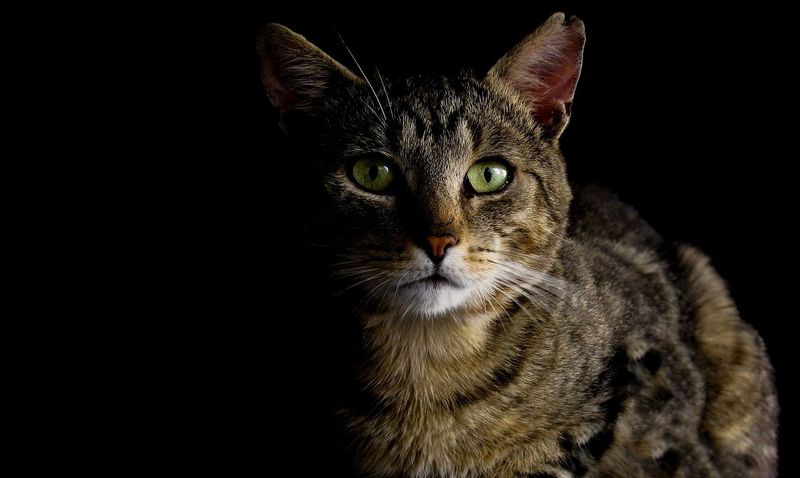
Cats possess significantly superior night vision compared to dogs. Their eyes contain a special reflective layer called the tapetum lucidum that allows them to see in light levels six times dimmer than what humans need.
This remarkable adaptation helps cats hunt during dawn and dusk when their prey is most active. While dogs also have this reflective layer, it’s not nearly as efficient as a cat’s.
Your feline friend can navigate your home in near-total darkness without bumping into furniture, while your dog will likely bump into things if the lights are completely off. This explains why cats are more active at night!
2. Taste Bud Differences

Ever wonder why your dog will eat almost anything while your cat turns up its nose at new foods? The answer lies in their taste buds! Cats have around 470 taste buds, while dogs boast about 1,700 – and humans have nearly 10,000.
Cats actually cannot taste sweetness at all. They lack the genetic coding for sweet taste receptors, making them completely indifferent to sugary treats that dogs often love.
This taste limitation explains why cats are such picky eaters compared to dogs. Their fewer taste buds focus primarily on detecting meat and protein – reinforcing their status as obligate carnivores.
3. Sweat System Secrets
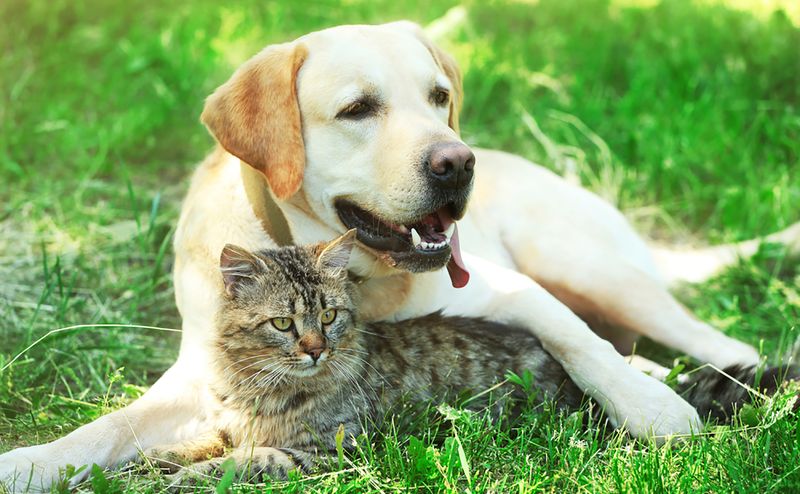
When it comes to cooling down, cats and dogs couldn’t be more different. Cats actually sweat through their paw pads – those tiny little feet contain special sweat glands that help regulate their temperature.
Dogs, on the other hand, rely almost entirely on panting to cool themselves. That’s why you’ll see your pup with tongue hanging out on hot days, while your cat might leave tiny wet paw prints if they’re overheated.
This difference explains why cats generally tolerate heat better than dogs. Your feline friend has multiple cooling methods – sweating, panting, and seeking cool surfaces – while dogs primarily depend on their respiratory system.
4. Bone Count Surprise
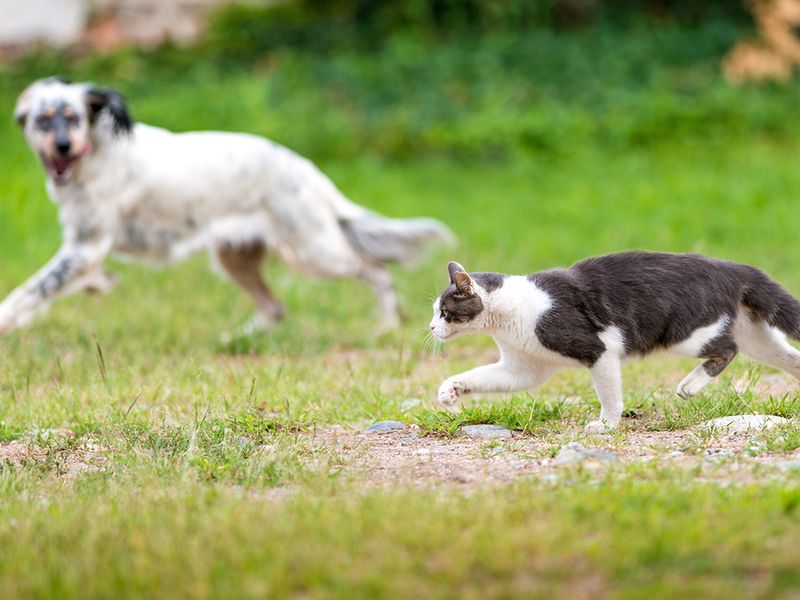
Cats have more bones in their body than dogs do – a surprising anatomical difference between these common pets. The average cat has 230 bones, while most dogs have about 319 bones, with the exact number varying by breed and tail length.
The extra bones in cats are primarily found in their spine, giving them that incredible flexibility we all admire. This is why cats can squeeze through tiny spaces and always seem to land on their feet.
A cat’s collarbone isn’t attached to other bones, allowing them to fit through any opening the width of their whiskers. Dogs have a more rigid skeletal structure, trading flexibility for the strength needed for running and endurance.
5. Social Media Stars

Cats rule the internet while dogs dominate social gatherings – a fascinating social difference between our furry companions. Studies show cat videos and images receive 2.1 times more interactions on social media than dog content, despite dogs being more popular pets overall.
This online cat dominance contrasts sharply with real-world behavior. Dogs actively seek human attention and interaction, making them social media creators, while cats’ mysterious, aloof nature makes them perfect content subjects.
Researchers suggest we’re drawn to cats online because their expressions and behaviors remain somewhat enigmatic to us. Meanwhile, dogs’ transparent emotions and desires make them more immediately understandable companions in person.
6. Jaw-Dropping Differences
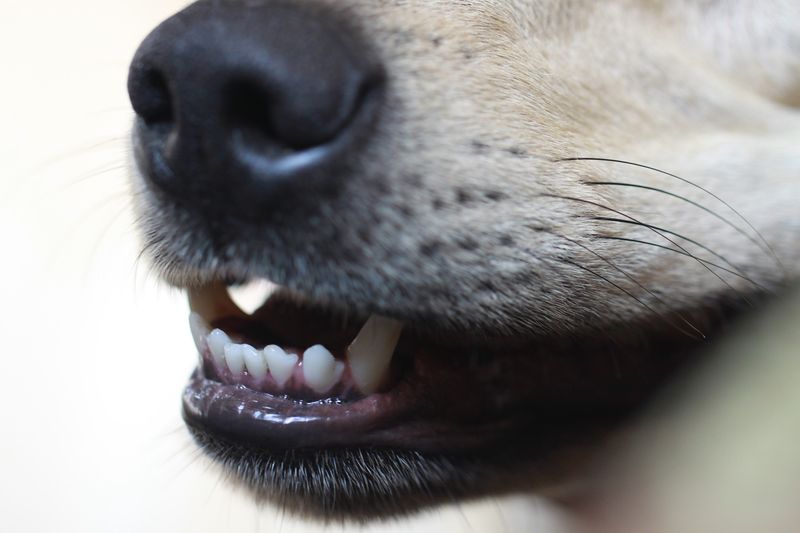
The way cats and dogs move their jaws when eating reveals a fundamental difference in their hunting evolution. Dogs can move their jaws side to side like humans, allowing them to chew and grind food thoroughly – a trait developed from their omnivorous ancestry.
Cats, however, can only move their jaws up and down in a scissor-like motion. This limitation means they can’t chew food horizontally, which is why they tear meat into small pieces they can swallow.
Watch closely next mealtime and you’ll notice your dog chewing in a circular motion while your cat uses a distinctive chomping pattern. This jaw structure difference also explains why cats struggle with certain treats that dogs easily devour!
7. Memory Marvels

Dogs live mostly in the present, with a short-term memory span of about two minutes compared to cats’ impressive 16-hour memory retention. This explains why your cat holds grudges after you step on their tail, while your dog forgives almost instantly.
Feline long-term memory can last years – they’ll remember where prey was caught or where danger occurred. This memory difference affects how they learn too. Dogs respond well to immediate rewards during training, while cats connect actions with consequences even hours apart.
Your cat’s remarkable memory is why they might suddenly avoid a specific corner of your house where they once had a frightening experience. Meanwhile, your dog might be startled by the same vacuum cleaner every single day!
8. Friendship Formation Timelines

Dogs typically form bonds with new humans within hours or days, wagging their tails and showing immediate affection. This rapid friendship stems from their pack-oriented evolution, where quick social connections meant survival.
Cats, by contrast, may take weeks or even months to fully warm up to a new person. Their solitary hunting background means they’re naturally more cautious and selective about who they trust.
This difference isn’t about one pet loving more deeply than the other. Research shows that once a cat forms a bond, it’s just as strong as a dog’s – it simply takes longer to develop. Understanding this timeline can help prevent misinterpreting a new cat’s aloofness as rejection.
9. Vocalization Vocabulary

Cats have a much more extensive vocal range than dogs, producing over 100 different sounds compared to a dog’s repertoire of about 10. Your feline friend can chirp, trill, purr, meow, yowl, hiss, and chatter – each sound conveying specific meaning.
Fascinatingly, adult cats only meow at humans, not at other cats! This vocalization was developed specifically to communicate with people, while dogs’ barking serves multiple purposes with both humans and other dogs.
Scientists believe cats evolved this rich vocal range because their wild ancestors lived solitary lives and needed varied sounds for the few critical interactions they had. Dogs, as pack animals, relied more on body language for their frequent social communications.
10. Water Relationship Revelations

Most cats have a notorious aversion to water while many dog breeds naturally love swimming. This difference traces back to their ancestral habitats – dogs evolved alongside rivers and lakes, often helping humans with water-based tasks like retrieving.
Cats descended from desert-dwelling ancestors where water was scarce. Their fur lacks the dense undercoat many dogs have, making it difficult to stay warm when wet. A soaked cat takes much longer to dry and grooms excessively after water exposure.
Interestingly, some cat breeds like Turkish Vans and Maine Coons actually enjoy water! These exceptions typically come from regions where swimming was advantageous for hunting or survival, showing how environment shapes behavior even within species.
11. Whisker Wonders
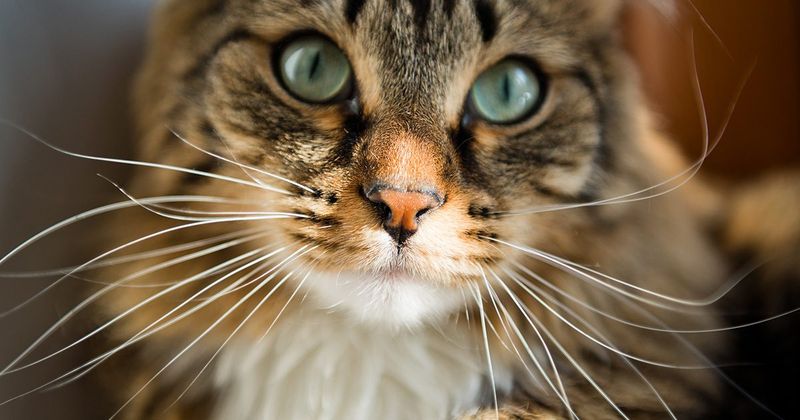
Both cats and dogs have whiskers, but a cat’s whiskers serve as sophisticated measuring tools. A cat’s whiskers are exactly as wide as its body, allowing them to determine if they can fit through tight spaces without getting stuck.
Dog whiskers primarily detect air currents and nearby objects, helping them navigate in the dark. However, they lack the precise spatial awareness function that cat whiskers provide.
Even more remarkably, a cat’s whiskers can detect subtle changes in air currents, allowing them to sense prey movements or approaching predators from a distance. This whisker sensitivity explains why cats can seem to react to things before they’re visible – they’re literally feeling changes in their environment!
12. Intestinal Intrigue
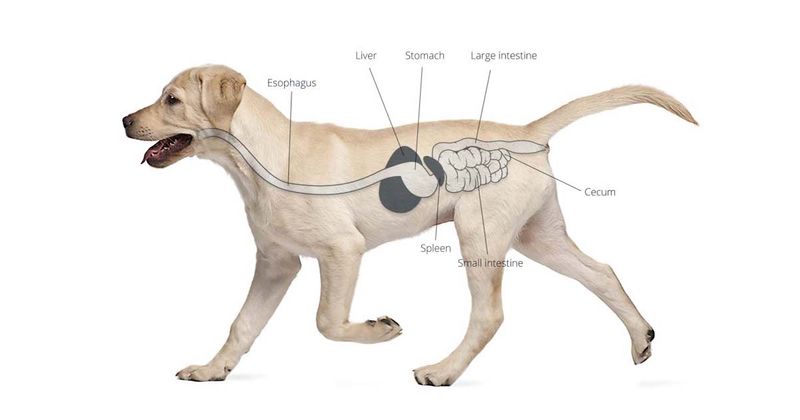
Cats have intestines that are only about three times their body length, while dogs have intestines about six times their body length. This dramatic difference explains why cats digest food in just 12-24 hours while dogs take 30-48 hours.
The shorter digestive system in cats evolved because they’re obligate carnivores requiring minimal plant digestion. Dogs, with their omnivorous diet, need longer intestines to break down plant material and extract nutrients.
This intestinal distinction affects their bathroom habits too. Cats typically eliminate waste more frequently than dogs and are less able to handle dietary changes without digestive upset. Your dog’s longer intestines give it more flexibility to process a variety of foods.
13. Pupil Shape Peculiarity
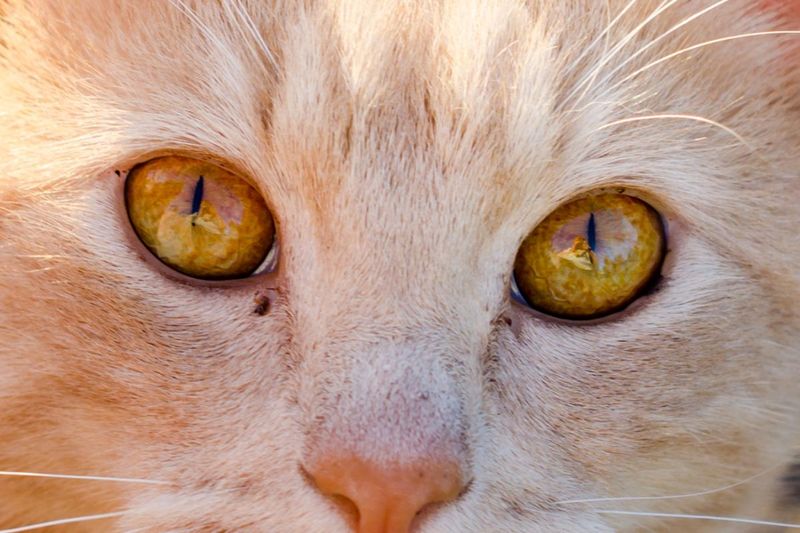
Look closely at your pets’ eyes and you’ll notice cats have vertical slit pupils while dogs have round ones. This fundamental difference reflects their hunting styles and times of activity.
Cats’ vertical pupils allow precise depth perception and can open/close dramatically to control light intake – perfect for ambush predators who transition between bright days and dark nights. These slits help cats judge exactly how far to pounce when hunting.
Dogs’ round pupils better suit their crepuscular (dawn/dusk) hunting and pack coordination needs. Their eyes prioritize detecting movement over precise depth calculation. This pupil difference is why cats excel at pouncing games requiring distance judgment, while dogs prefer chasing moving objects regardless of distance.
14. Pack Vs. Solo Mentality

Dogs naturally form hierarchical social structures, seeing their human family as their pack. This pack mentality makes them eager to please the perceived leader and explains why they often follow you from room to room – they’re maintaining pack cohesion.
Cats, conversely, evolved as solitary hunters who only come together for mating. They don’t recognize authority figures the way dogs do. When your cat ignores your commands, it’s not being stubborn – it simply doesn’t understand why it should take orders.
This fundamental difference explains why dogs typically learn commands more readily than cats. Dogs are biologically programmed to work cooperatively within a social structure, while cats form relationships based on mutual benefit rather than hierarchy.
15. Vitamin Needs Variance

Cats require vitamin A in their diet while dogs can produce it internally from beta-carotene found in plants. This crucial difference underscores why cats are obligate carnivores – they must eat meat to survive.
Similarly, cats need taurine (an amino acid) from animal tissue, while dogs can synthesize it themselves. Without dietary taurine, cats develop heart problems and blindness. These vitamin requirements evolved because wild cats consumed almost exclusively animal prey.
This nutritional divergence explains why you should never feed cats dog food long-term. Dog food lacks sufficient taurine and preformed vitamin A for feline health. Your cat’s pickiness about food isn’t just preference – it’s actually their body seeking the specific nutrients they can’t produce themselves!



